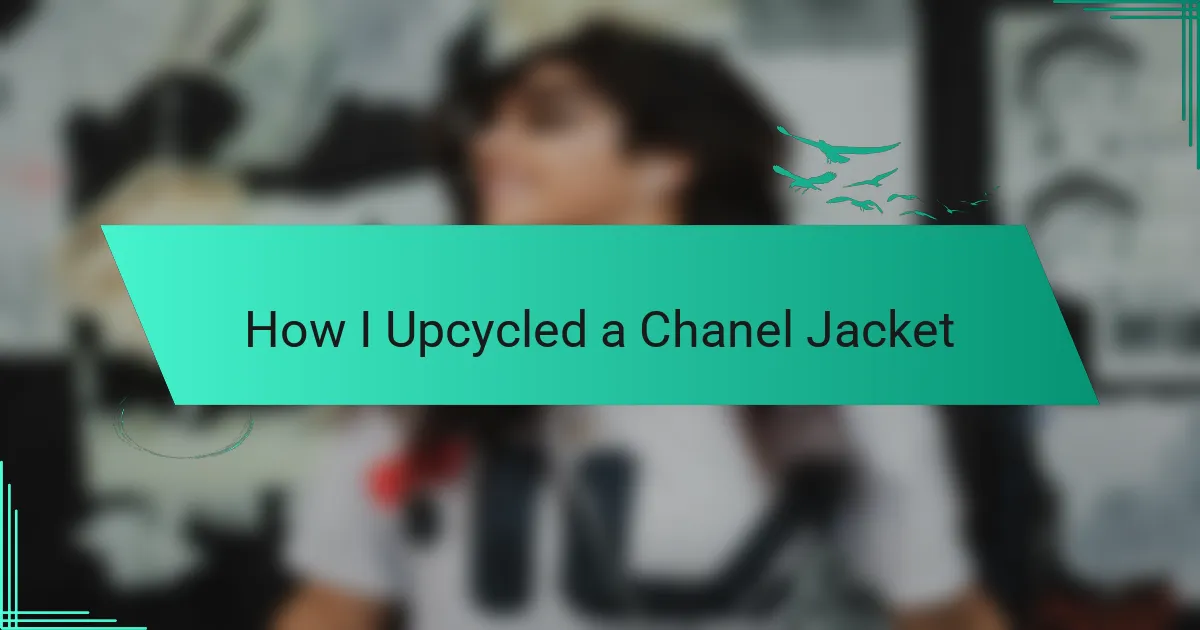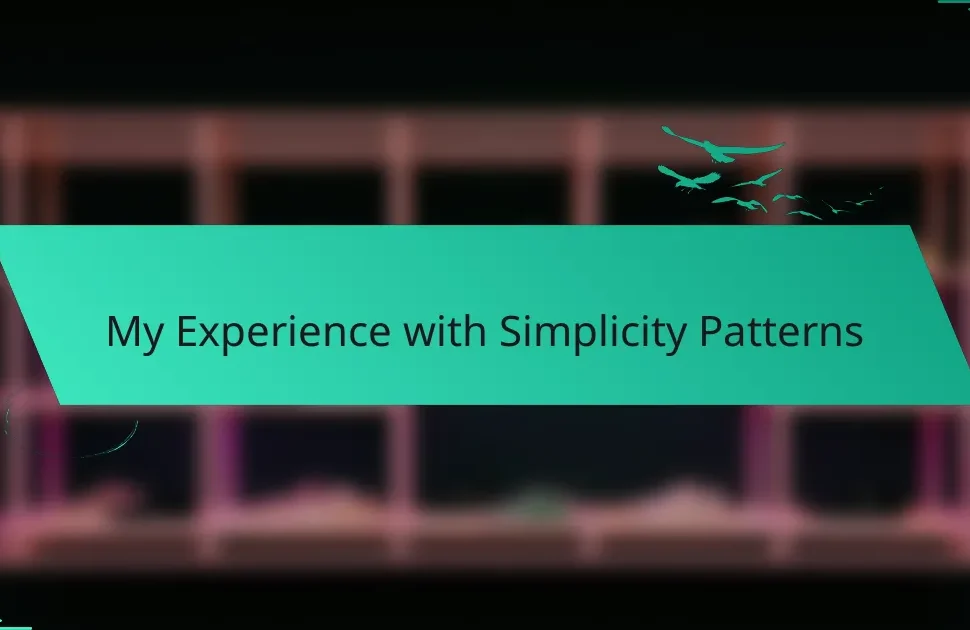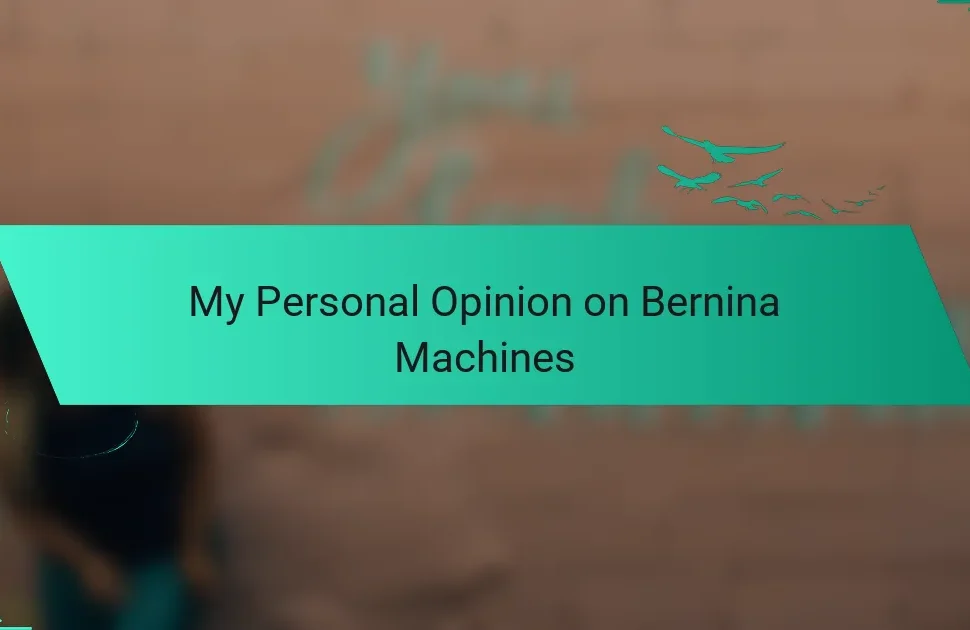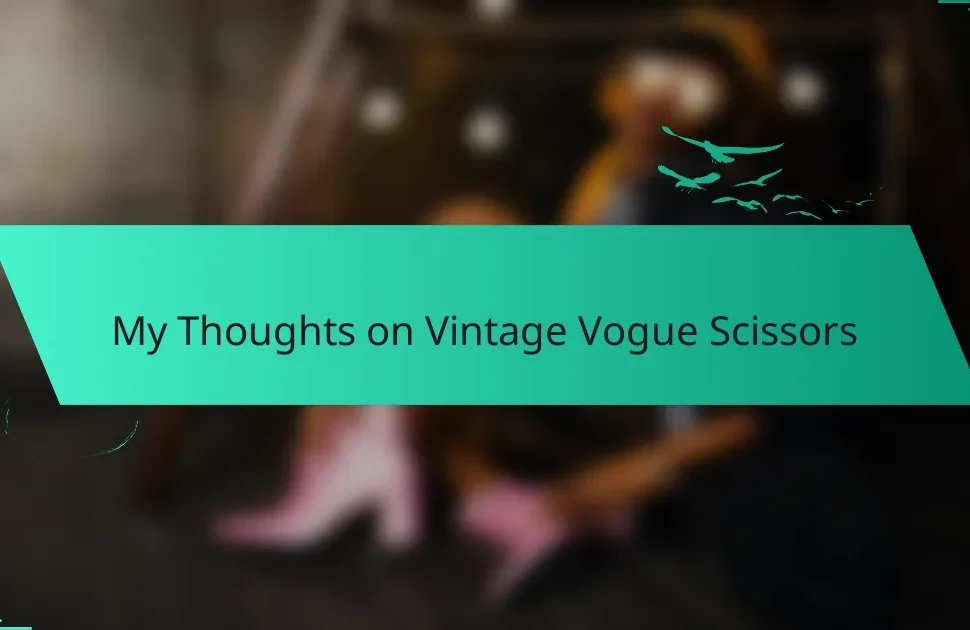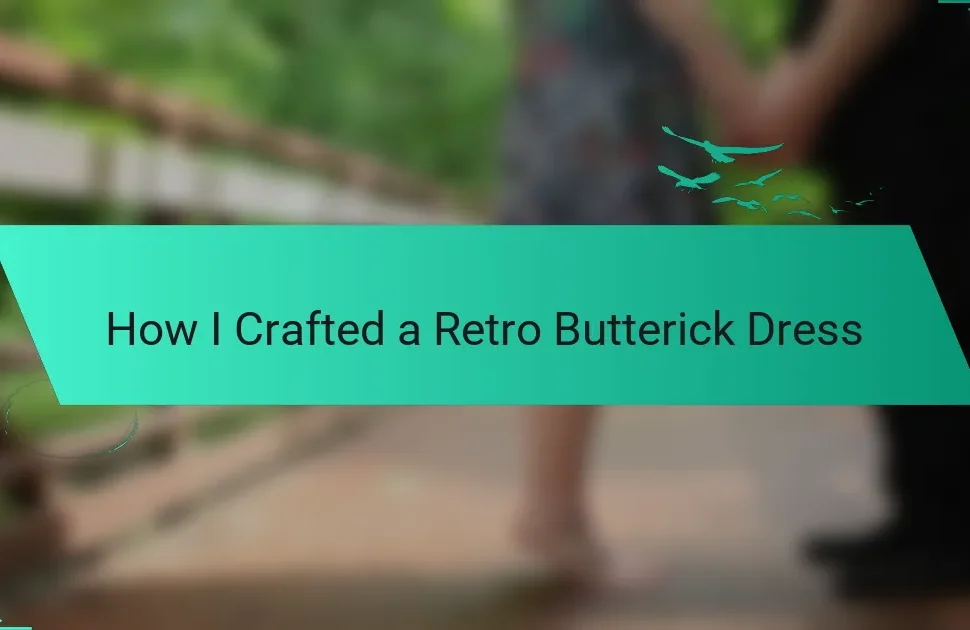Key takeaways
- Vintage fashion is celebrated for its ability to tell stories and promote sustainability through upcycling.
- Upcycling clothing encourages creativity, reduces waste, and supports individuality in fashion.
- Selecting high-quality materials and planning your project are crucial for successful DIY transformations.
- Each upcycled piece, such as a vintage Chanel jacket, blends personal style with historical significance, making it unique and meaningful.
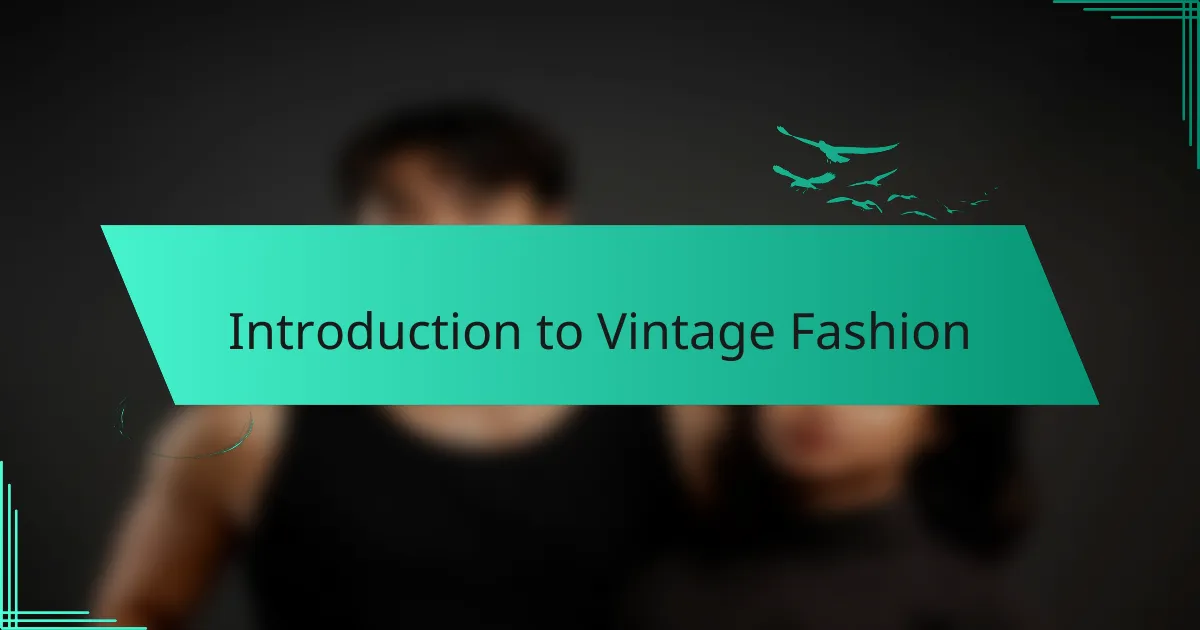
Introduction to Vintage Fashion
Vintage fashion holds a special place in my heart. I remember the thrill of finding my first vintage piece at a thrift store—it felt like uncovering a hidden treasure. There’s something uniquely captivating about wearing clothing that tells a story, showcasing not just style but also history.
Many fashion enthusiasts, like myself, appreciate how vintage pieces can be transformed into something fresh and new. This practice of upcycling not only breathes new life into old garments but also promotes sustainability, which is increasingly vital in today’s fashion landscape. It’s this blend of creativity and environmental consciousness that truly elevates the vintage fashion movement.
| Old Fashioned | Vintage Upcycled |
|---|---|
| Stiff and Restrictive Styles | Customized to Fit and Flatter |
| One-Size-Fits-All Trends | Unique, One-of-a-Kind Pieces |
| Mass Production | Sustainable and Eco-Friendly |
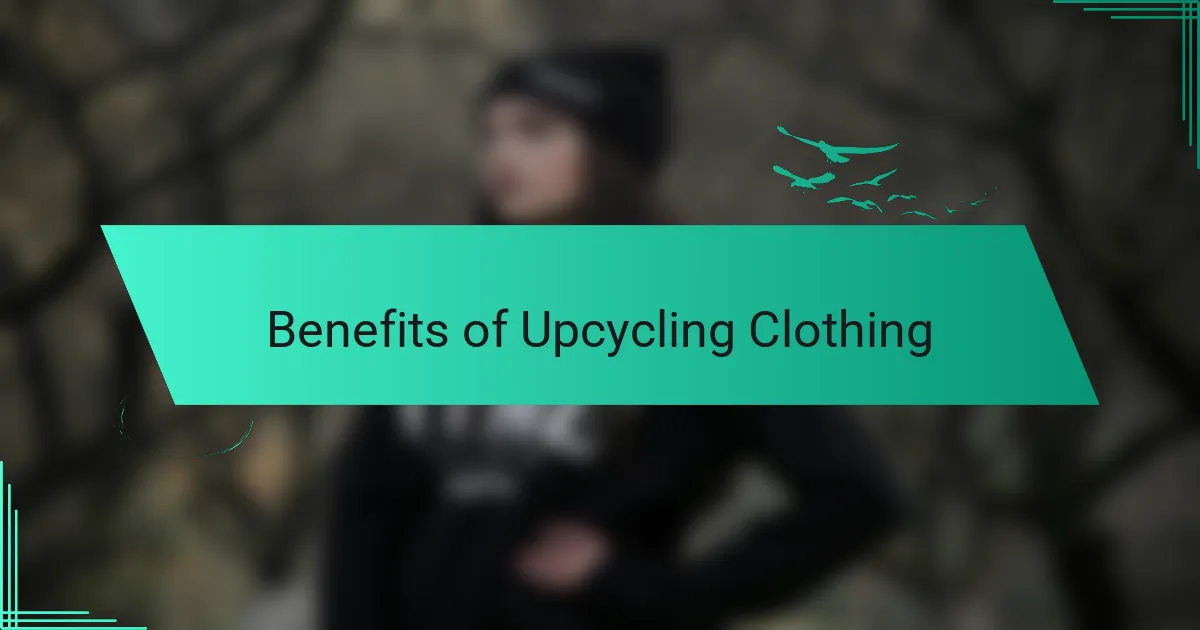
Benefits of Upcycling Clothing
Upcycling clothing allows us to breathe new life into pieces that might otherwise be discarded. When I transformed my vintage Chanel jacket, I felt a surge of creativity. Not only did it become a unique statement piece, but it also carried a story of rebirth, reminding me of the value of craftsmanship and history behind every stitch.
Additionally, upcycling is an eco-friendly choice that helps reduce waste. As I worked on my jacket, I realized how fulfilling it was to repurpose something that once held so much value. It’s empowering to turn old garments into something fresh and wearable, proving that fashion doesn’t have to be synonymous with mindless consumption.
- Saves money: Upcycling can be a cost-effective way to curate your wardrobe.
- Promotes creativity: It encourages innovative thinking and personal expression.
- Supports sustainability: Reduces fabric waste and lessens environmental impact.
- Preserves history: Each upcycled piece tells a unique story, adding personal value.
- Encourages individuality: By creating custom styles, you avoid fast fashion trends.
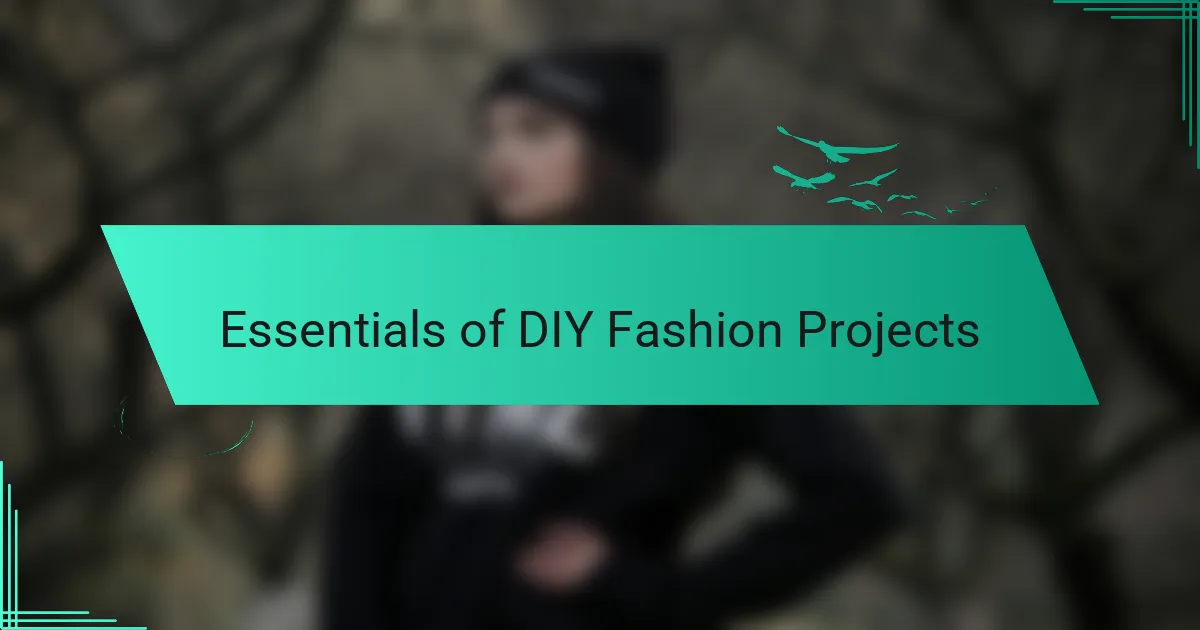
Essentials of DIY Fashion Projects
When embarking on a DIY fashion project, the first essential is choosing the right materials. I often find that older garments, especially those with a rich history, have a texture and quality that modern pieces lack. Have you ever felt a fabric that simply calls out to be transformed? That tactile connection is invaluable when upcycling a vintage piece.
Another crucial aspect is having a clear vision of what you want to create. I recall sketching out my ideas for my Chanel jacket before even picking up a needle. This planning phase not only fuels creativity but also helps keep the project focused. With a defined direction, the execution feels much more purposeful and fulfilling.
Finally, patience is key. DIY projects can sometimes lead to unexpected challenges, and I’ve had my fair share of mistakes along the way. There were moments when I doubted my skills, but every stumble became a learning experience. Isn’t it fascinating how each challenge adds depth to the final piece, making it uniquely yours?
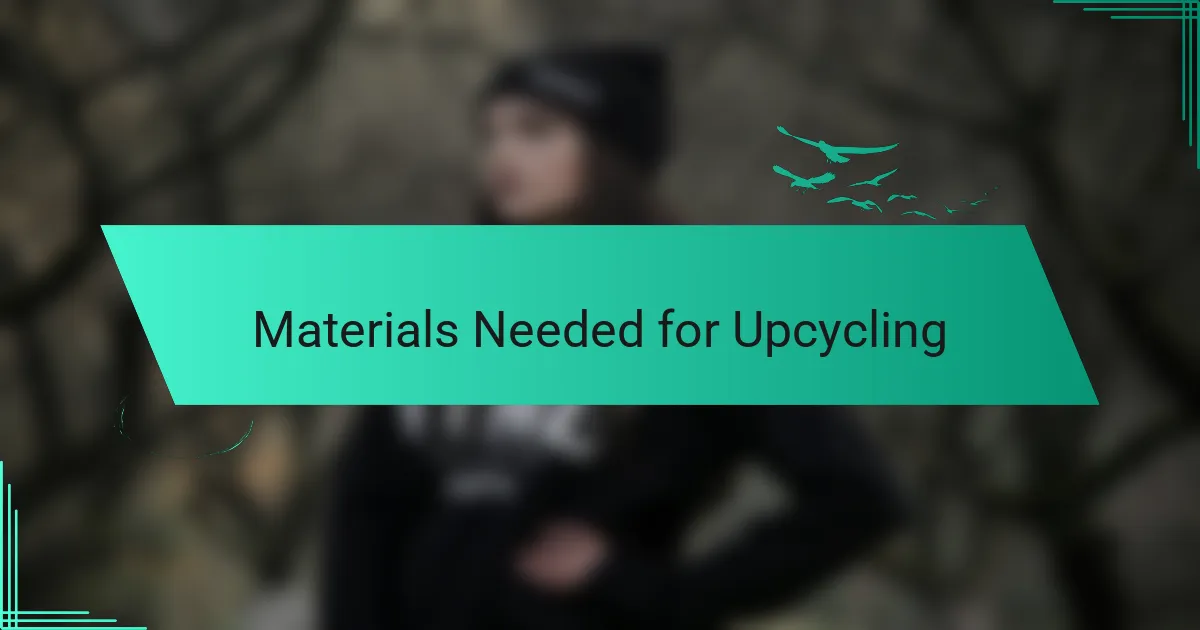
Materials Needed for Upcycling
When upcycling a Chanel jacket, the materials you choose are crucial to the transformation. I found that high-quality fabrics, like silk or cashmere, not only maintained the luxury feel but also added personal flair. Additionally, some essential tools, such as fabric scissors and a sewing machine, are must-haves in order to achieve a professional finish.
I remember sifting through my sewing box, rediscovering vintage buttons that perfectly complemented the jacket’s design. It’s amazing how personal touches can elevate an already beautiful piece into something that truly represents my style.
Here’s a comparison table of materials I’ve found useful for upcycling:
| Material | Purpose |
|---|---|
| Fabrics | To replace or enhance existing fabric |
| Buttons | Add unique accents or cover missing ones |
| Sewing Tools | Ensure precise cuts and finishes |
| Embellishments | Personalize the piece further |
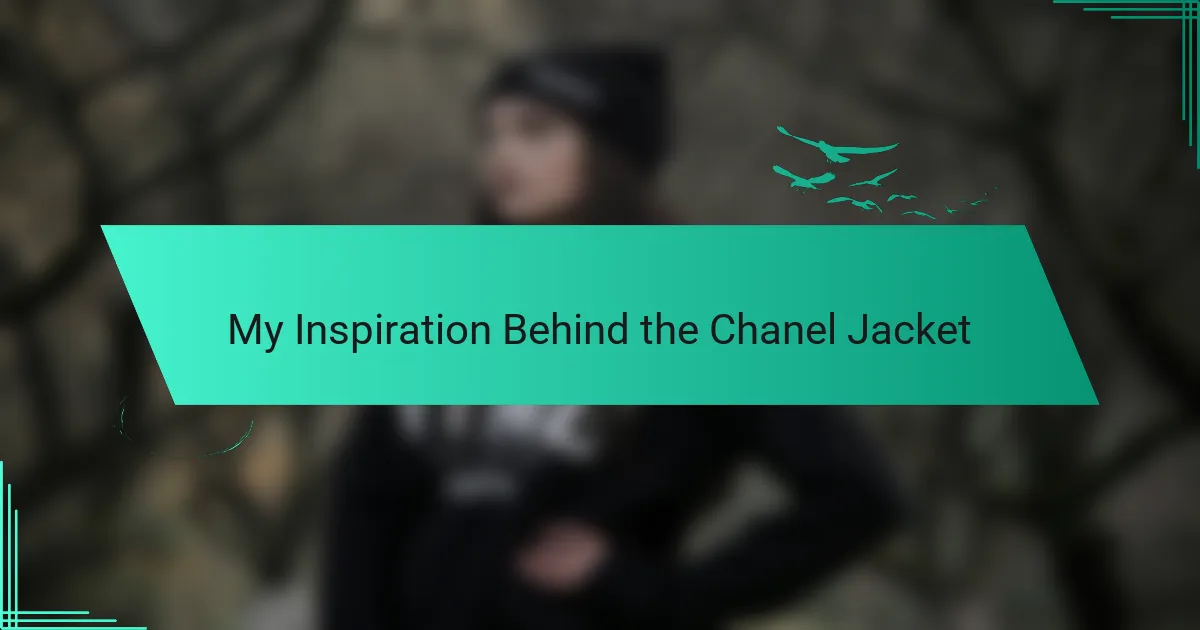
My Inspiration Behind the Chanel Jacket
It’s fascinating how a single piece of clothing can carry such a story. When I first laid eyes on the Chanel jacket, it was like discovering a hidden gem. The craftsmanship, the style, and the vintage charm spoke to me. It reminded me of my grandmother’s stories about fashion in the 1980s, where elegance met creativity.
The decision to upcycle it came from a desire to blend that classic aesthetic with my modern wardrobe. I wanted to preserve its unique essence while making it a true reflection of my personal style. Each stitch I made was infused with memories, not just of my life but of a fashion era that values timeless beauty.
Here’s a quick comparative look at the Chanel jacket before and after my upcycling adventure:
| Original Features | Upcycled Features |
|---|---|
| Classic Chanel silhouette | Customized fit for modern look |
| Neutral color palette | Bold accents and patches |
| Standard buttons | Unique vintage button collection |
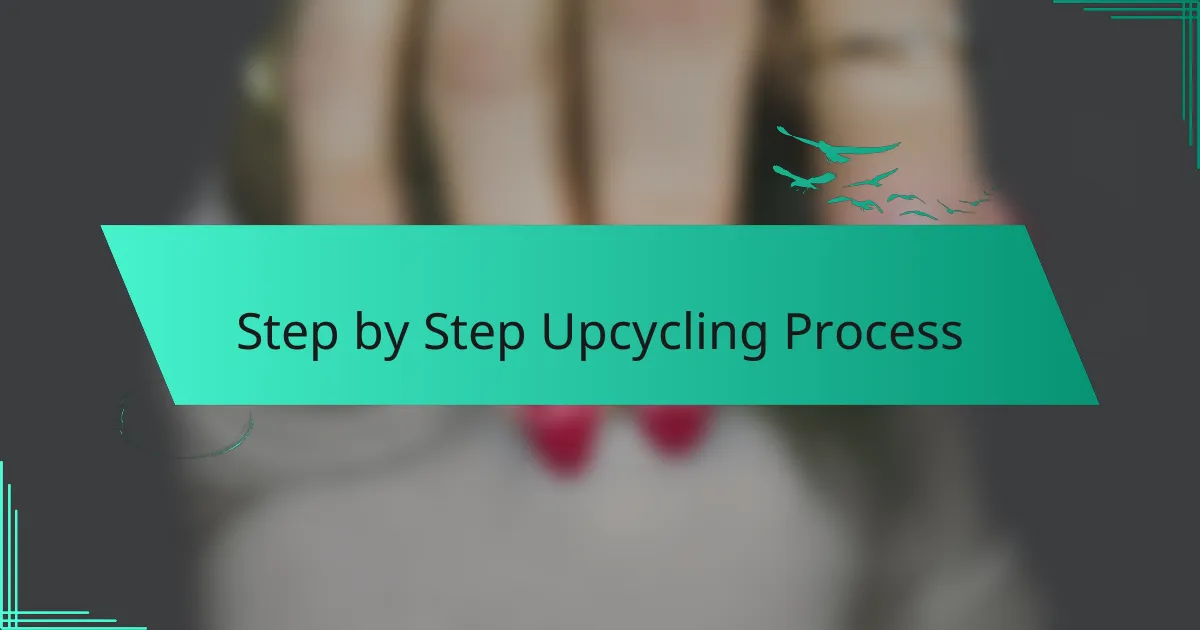
Step by Step Upcycling Process
When I first laid eyes on the Chanel jacket, it was love at first sight, but it needed a refresh. The key to upcycling is envisioning what the piece can become. I carefully examined the stitching and fabric to see where I could add my own flair without compromising its vintage charm.
Here’s a simple step-by-step process that worked for me:
- Assess the Jacket: Look for areas that need repair or could use embellishment. I discovered some fraying edges that added character.
- Choose Your Style: Decide how you want to personalize it—adding embellishments or altering its fit. I opted for some vintage patches that echoed the original vibe.
- Gather Materials: Collect tools and supplies—like fabric paint, patches, or lace—that resonate with your vision. I found some lace from an old dress that beautifully contrasted with the jacket.
- Make Adjustments: If you need to alter the fit, take your time sewing or pinning. I took it to my sewing machine, finding it calming to create my desired silhouette.
- Embellish: Add your finishing touches, whether it’s painting details, sewing patches, or adding unique buttons. Watching the jacket transform was incredibly satisfying for me.
Each step allowed me to infuse my personality into a classic piece, making it truly one-of-a-kind.
